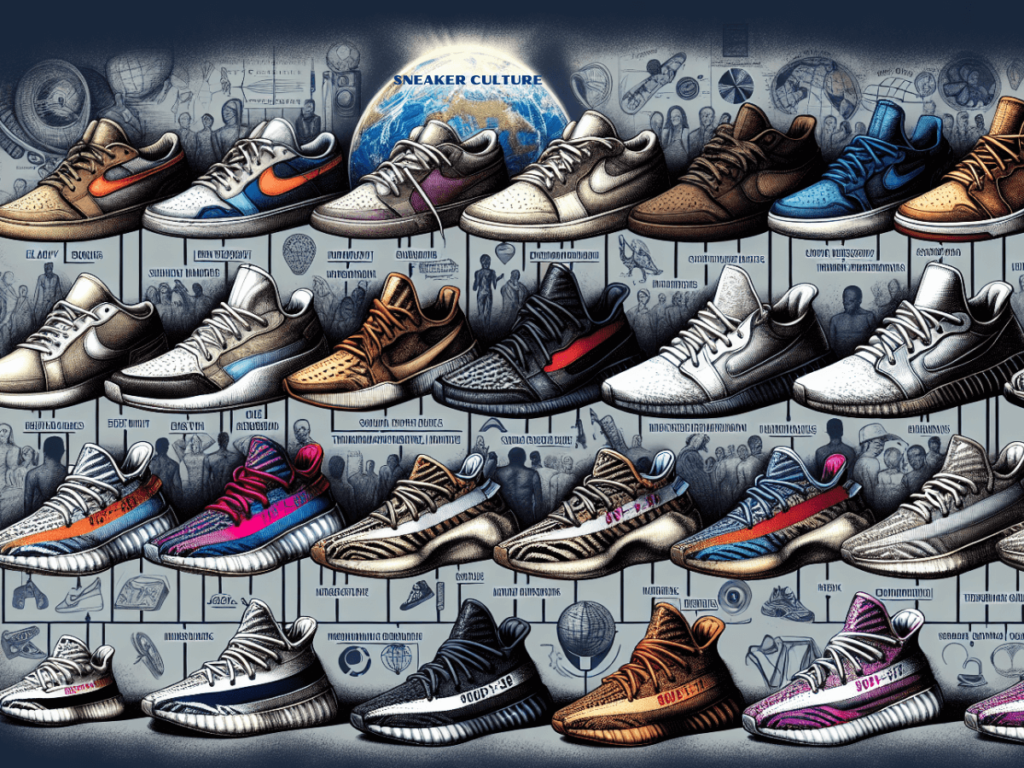Sneaker culture has undergone a remarkable transformation over the decades, evolving from practical footwear to a significant cultural phenomenon. This article explores the key milestones in the evolution of sneaker culture, highlighting its impact on fashion, music, and lifestyle.
Origins of Sneakers
Sneakers originated in the late 19th century as athletic shoes designed for sports. The term “sneaker” comes from the rubber sole, which allowed wearers to move silently. Early models, like the Keds in 1916, were primarily functional, aimed at providing comfort for physical activities.
The Rise of Sports Endorsements
The 1980s marked a turning point for sneaker culture with the rise of athlete endorsements. Brands like Nike and Adidas began signing deals with prominent athletes, including Michael Jordan, whose collaboration with Nike led to the launch of the Air Jordan line. This partnership not only popularized sneakers among basketball fans but also set the stage for athletes to become cultural icons.
The Hip-Hop Influence
During the late 1980s and early 1990s, hip-hop culture embraced sneakers as a symbol of style and status. Artists like Run-D.M.C. popularized brands like Adidas, often wearing them in music videos and public appearances. This cultural crossover transformed sneakers into a fashion statement, linking them to youth culture and self-expression.

Streetwear and Sneaker Collaboration
The late 1990s and early 2000s saw the emergence of streetwear, with brands like Supreme and Stüssy gaining popularity. Sneaker collaborations with streetwear brands became commonplace, leading to limited-edition releases and exclusive drops. This trend created a sense of urgency among collectors, further solidifying sneakers as sought-after fashion items.
The Sneakerhead Phenomenon
As sneaker culture grew, so did the community of sneakerheads—avid collectors and enthusiasts. Sneaker conventions and online forums emerged, providing platforms for fans to buy, sell, and trade rare pairs. The culture of “hype” surrounding limited releases fueled the secondary market, with some sneakers selling for thousands of dollars.
The Impact of Technology
Advancements in technology have also influenced sneaker culture. Brands began incorporating innovative materials and design features, such as Nike’s Flyknit and Adidas’ Boost technology. These innovations not only improved performance but also attracted fashion-forward consumers looking for both style and functionality.
Sustainability and Ethical Concerns
In recent years, there has been a growing awareness of sustainability and ethical manufacturing within sneaker culture. Brands are now exploring eco-friendly materials and production methods. Collaborations with organizations focused on environmental issues have also emerged, allowing consumers to make more conscious choices.
The Future of Sneaker Culture
As sneaker culture continues to evolve, it remains deeply intertwined with fashion, art, and music. The rise of digital platforms and social media has further amplified the culture, enabling brands and influencers to reach wider audiences. The future of sneaker culture will likely see continued innovation, collaboration, and a push towards sustainability.
Conclusion
Sneaker culture has transformed from functional athletic wear into a dynamic cultural phenomenon. Through sports endorsements, hip-hop influences, and technological advancements, sneakers have established themselves as iconic symbols of style and self-expression. As the culture evolves, it reflects broader societal trends and continues to shape the way we view fashion and identity.




